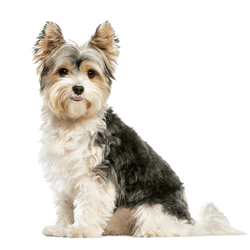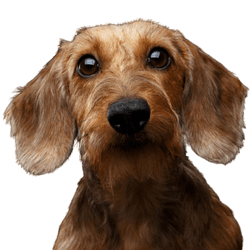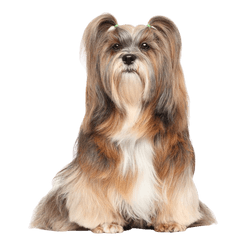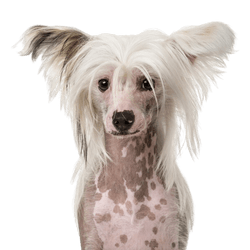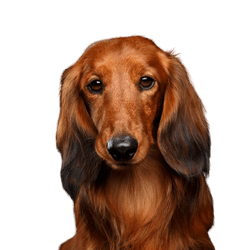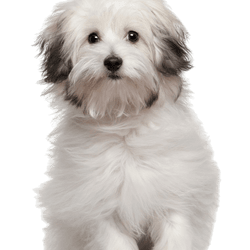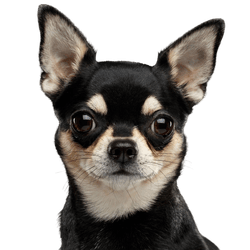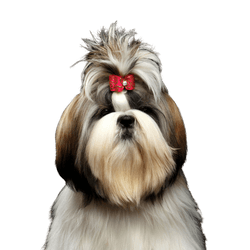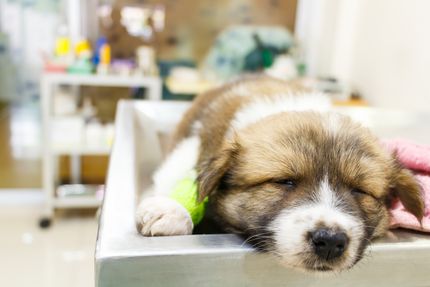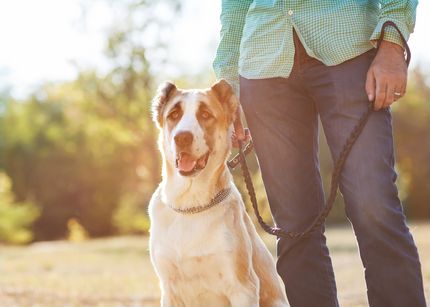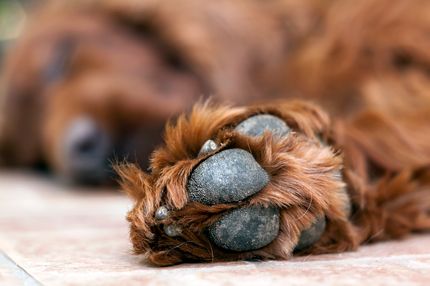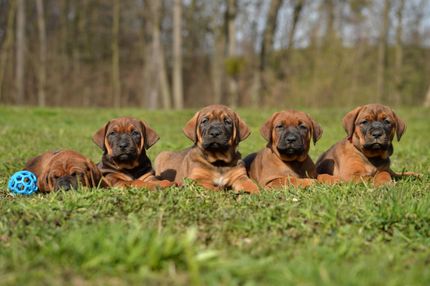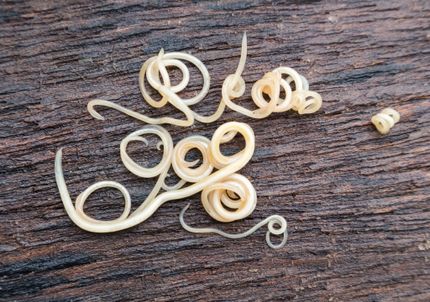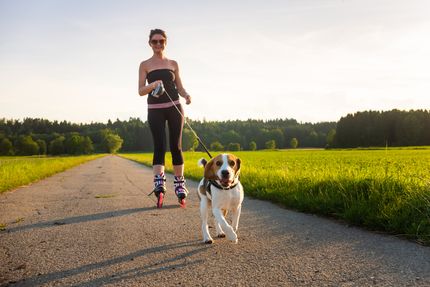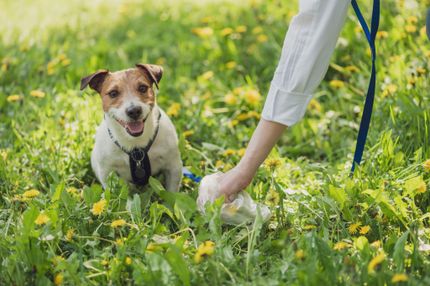Facts & Origin
Origin and history of the Maltese
Maltese can be proven to have existed for over 2000 years, as white, long-haired dwarf dogs could be seen on illustrations from the time of the Pharaohs and ancient Greece. These ancestors of all bichon-type dogs, also known as "canes melitensis" by Aristotle, were popular lapdogs of the rich and powerful in ancient Rome.
Although one may think the Maltese is originally from Malta, its name actually comes from the now sunken island of Melitea in the Adriatic Sea. The adjective maltais comes from the Semitic word "màlat", which means refuge or harbor. Thus, its ancestors lived in the harbors and coastal towns of the Mediterranean and were used to fight mice and rats.
During the Renaissance, it came to Europe, where it was eventually kept as a prestige dog in noble and royal houses. As a result, in the 17th and 18th centuries, the Maltese ultimately almost became extinct, as attempts were made to breed them as small as squirrels.
Suitability and keeping
Nowadays, the Maltese is officially known as a companion dog that does not require too long walks. Coupled with its size, this makes it optimal for living in an apartment or even in the city, gladly for older people. However, due to his eagerness to bark when strangers enter his home, he also makes a good little watchdog.
Special features of the Maltese
What the Maltese has over other long-haired dog breeds is his odorless coat and lack of shedding. This will please sensitive individuals or hygiene fanatics, as Maltese shed very little.
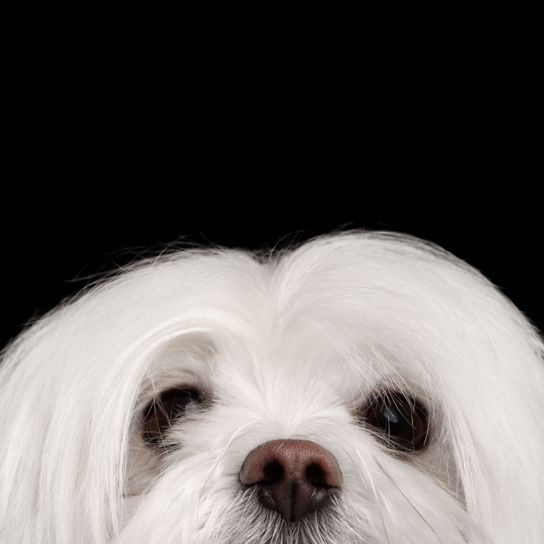
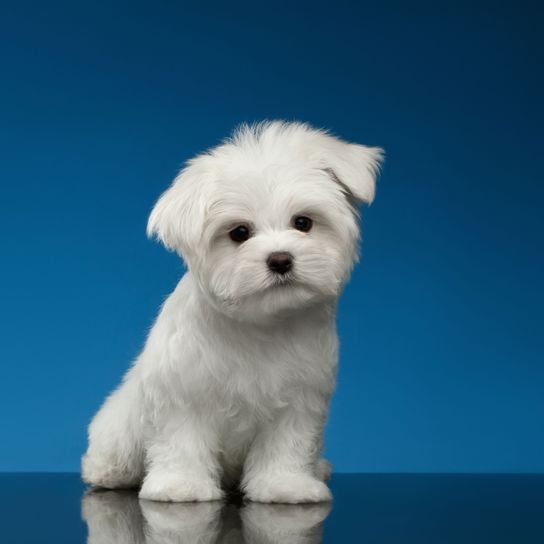
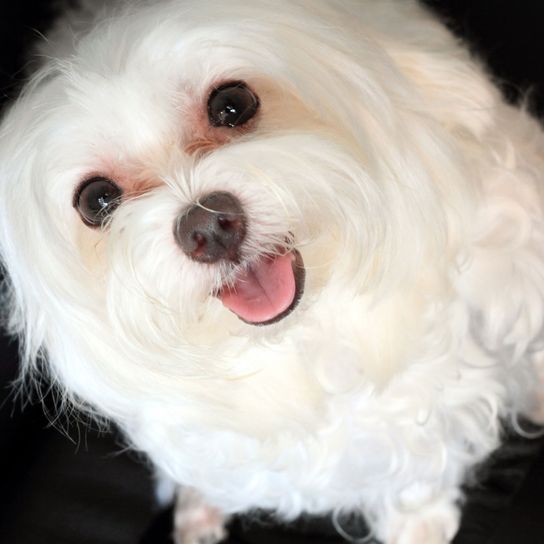
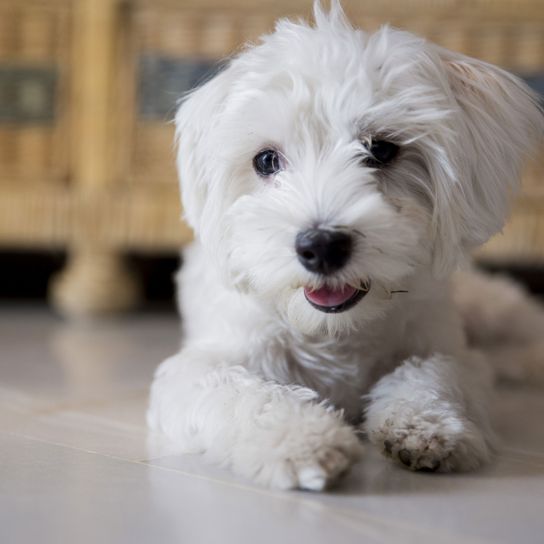
| Alternate Name | - |
| Origin | Malta |
| Life expectancy | 12 - 15 years |
| Care requirements | high-maintenance |
| Activity level | low |
| FCI group | Bichons and related breeds |
| AKC group | Toy Group |
| KC group | Toy Group |
Maltese mixes
Attitude, character and temperament of the breed
Typical character traits of the Maltese
The Maltese is usually a lively but gentle companion, who is very docile and intelligent. Therefore he can be led well and is also very suitable for beginners in dog keeping. Well-behaved, he is an ideal family dog who also gets along with children.
With the right upbringing and training, in which he is not underestimated despite his size - if necessary with the help of a dog school - you get a cuddly and affectionate dog that builds a close relationship with its owner. Early socialization or habituation to other people and animals is also advisable.
Usage
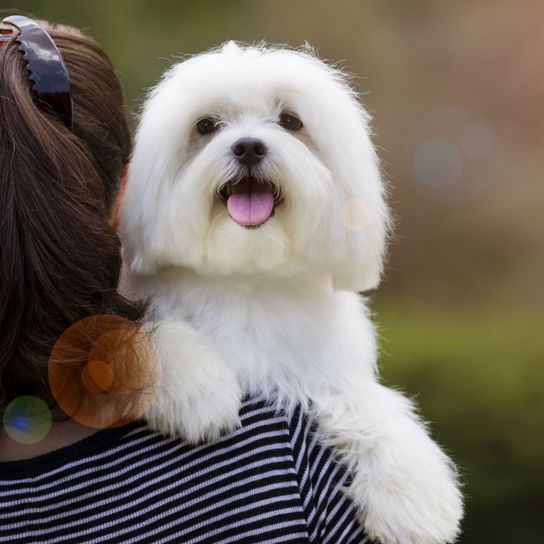
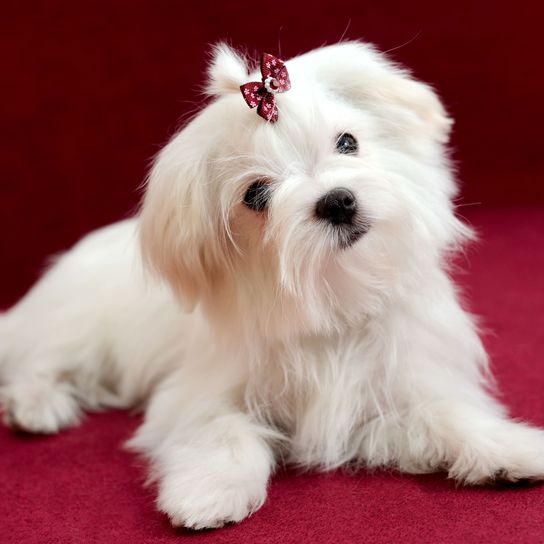
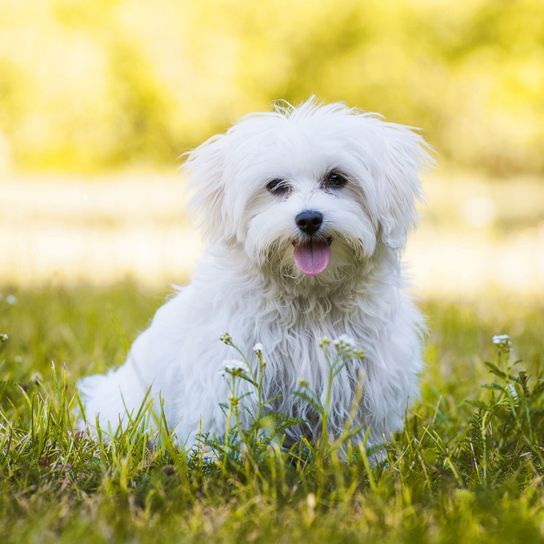
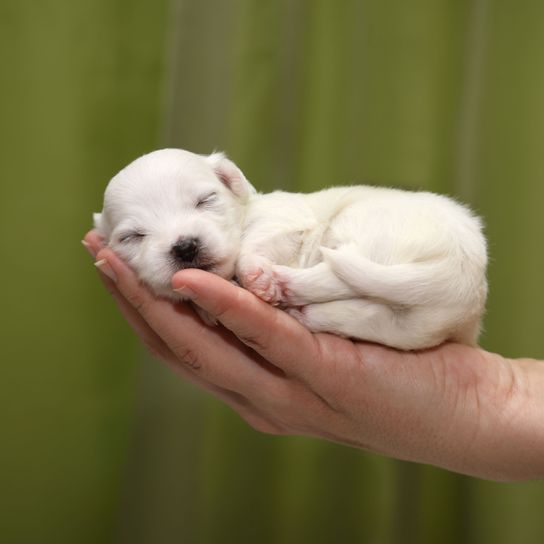
Keeping a Maltese healthy
Maltese have an average life expectancy of 12-15 years if they are well cared for. This includes regular health checks of the eyes, ears, claws and coat. The latter also requires special care, which is not necessarily easy: the dense long coat must be brushed daily to avoid matting.
Breed specific diseases
Although the Maltese is basically a rather robust and healthy dog breed, it can also suffer from health problems. These include infections of the eyes, since the long fur hairs of the Maltese, like to hang in the face. In addition, the coat can lead to skin diseases if dirt is not carefully removed. As a small dog breed, it is also prone to patellar luxations, which can be prevented by being overweight and putting too much stress on the joints, as well as dental problems. Therefore, check the dentition daily and react early.
In addition to these more general diseases, the dog breed specifically suffers more often from:
- malformations of the vessels
- idiopathic cerebellitis (tremor)
- White Shaker Syndrome (whole body tremor)
- Cushing's disease (disease of the adrenal glands)
- hydrocephalus
Buying a Maltese
Many of these diseases can be successfully controlled by a reputable Maltese breeding program. Therefore, be careful when choosing a puppy from a breeder to support the breed for the future as well as to have a long-lasting partner.
A Maltese costs about 1000 Euro. But there are also countless Maltese and Malti-Mix dogs in animal shelters. Inform yourself beforehand and give a "second-hand" dog the chance to find a new forever-home.

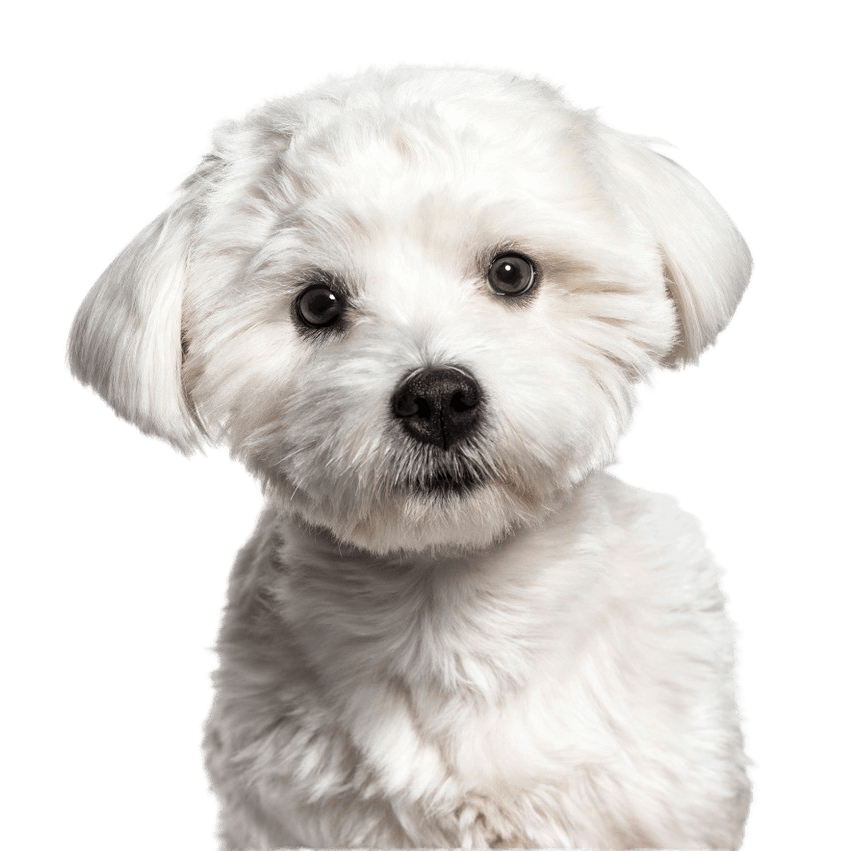
Breed characteristics of the Maltese
The dog breed is recognized by FCI and belongs to FCI Group 9 (Companion and Society Dogs), Section 1.1 (Bichons). It is listed as Standard No. 65 without working test.
The Maltese shows short and very quick steps when trotting. However, his gait is generally even, free and close to the ground gliding.
Maltese males have a height of about 21-25 cm, bitches grow to 20-23cm. The weight is usually 3-4kg.
The head
The head is relatively broad and the skull itself is slightly longer than the muzzle: the width between the zygomatic arches is equal to its length. In sagittal direction it is of slightly ovoid shape (ovoid). The sides of the skull are almost convex. The upper part of the skull is flat, the occipital process is not very pronounced; the projections of the frontal bone and the superciliary arches are well developed.
The Maltese has no or only a slight frontal furrow, the stop, however, is strongly accentuated.
The muzzle
Situated in the prolongation of the bridge of the nose, the front of the round nose, seen in profile, is vertical. It is large with open nostrils and pigmented black.
The area below the eyes is well chiselled. The height of the muzzle is much less than its length, yet when viewed from the front, the muzzle must not appear square, as its front curves into the sides. The bridge of the nose should be straight with well defined furrows in its central part. Viewed from the front, the upper lips have the shape of a very open arch at their junction. They are not very developed in depth and the corner of the lips is not visible. The upper lips completely match the lower ones, so that in side view the muzzle is bounded downward by the lower jaw bone. The edge of the lips must necessarily be pigmented black.
The dentition
The lower jaw bone, whose branches are straight, is neither prominent nor receding in its frontal part. The dental arches fit perfectly together and close as scissors ("scissor bite").
The eyes
The Maltese has lively, alert eyes, which are unexpectedly large and the eyelid opening is almost circular. The eyelids are in close contact with the eyeball, which may never lie low, but protrude very slightly almost flush with the head. The eyes lie forward on almost the same plane. When viewed from the side, the sclera (whites of the eyes) must not be visible; they are dark ocher; the edges of the eyelids and the nictitating membrane are black.
The ears
Almost triangular, the width of the ears is approximately 1/3 of their length. They are set high above the zygomatic arch, barely detached, and are carried hanging, while resting against the sides of the skull.
The trunk
Although the neck, which is carried erect and has a slightly curved topline, is covered with abundant hair and has no loose skin, it is clearly distinguishable from the nape of the neck. The length of the neck is about half the height at the withers.
Measured between the point of the nose and the point of the buttock, the length of the body exceeds the height at the withers by one third. The upper profile line is straight to the base of the tail, the withers are slightly above. The length of the back is more than half the height at the withers. Situated in the extension of the back lumbar line, the croup is very broad and long.
The deep rib cage should be roomy good, reaching down to the elbow with ribs not very arched. The sternum itself is very long.
The tail
The tail of the Maltese is set in the extension of the croup, thick at the root but thin at the tip. It forms a single large arch, the terminal point of which falls between the hip bones and touches the croup. A tail curved sideways towards one side of the torso is tolerated.
The forelimbs
When viewed as a whole, the legs lie well against the body and are vertical. The length of the well laid back shoulder is equal to 1/3 of the height at the withers with the tips of the shoulder blades standing apart. The upper arm is longer than the shoulder blade, the forearm should be dry, with hardly visible muscling, but rather strong boned compared to the size of the breed. The fore tarsal joint is in the perpendicular of the forearm and is mobile, without thickenings. It is also covered by thin skin. The pastern has the same characteristics and is vertical due to its short length.
The round front paws have closely knit toes that are arched. The pads of the Maltese should be black, the claws also or at least of dark color.
The hind limbs
The hindquarters have a strongly muscled thigh, the posterior border of which is convex. The stifle joint shows free mobility. The lower thigh has a barely visible furrow between the Achilles tendon and the bone, inclined to the horizontal by 55°, and is slightly longer than the upper thigh. The anterior angle of the hock is 140°. The hind pastern is low and completely vertical and the distance between the ground and the point of the hock is slightly longer than 1/3 of the height at the withers.
The round hind feet should be with closed and curved toes and have black pads. The claws should also be black or at least dark in color.
The coat
The dense coat of the Maltese is shiny, lustrous, falling heavily and of silky texture. It should be long over the entire body and remain smooth throughout its length, showing no traces of curl or frizz. On the body it should be longer than the height at the withers and fall heavily to the ground, like a well-fitting cape, clinging to the body without opening and forming whirls or tufts. These are permitted only on the front limbs from elbow to paw and on the hind limbs from knee to paw.
The Maltese does not usually have an undercoat. On the head the hair is very long, as well as in the foreface, which blends with the whiskers and on the skull it becomes so long that it even blends with the hair of the ears. On the tail, the hair falls back on one side of the body, i.e. on the flank and thigh, and reaches down to the hock.
The Maltese is basically pure white, but a light ivory tint is permissible. Traces of a pale orange shade are also tolerated in breeding, but are undesirable and represent an imperfection.
| Fur length | long |
| Fur | flat coated |
| Ear shape | Triangle |
| Tail | fanned out |
| Anatomy | dainty |
| Size ♀ | 20 - 23 cm |
| Weight ♀ | 3 - 4 kg |
| Size ♂ | 21 - 25 cm |
| Weight ♂ | 3 - 4 kg |
| Suitable For | Beginner, Seniors |
Colors



Known Diseases
Patellar problems
Problems with the Patellar can be a displacement or weak kneecap, which is one of the most common causes of lameness in dogs, also because of overweight.
Eye diseases
Often occur with allergies and intolerances.
Skin inflammations
Can be hereditary in certain breeds.
Heart disease
Can occur frequently in dogs and can sometimes be treated with medication.
FAQ
-
A Maltese puppy needs a similar equipment as other puppies: blanket, bowls, food, chest harness or collar, a brush for the curls and the coat in general.
-
Approximately 1500 euros costs a Maltese puppy.
-
On average, a Maltese needs 1-2 hours of outdoor exercise per day. You are welcome to buy smart toys and do additional mental exercise with him at home. Search games, for example, are ideal.
-
A Maltese dog needs about 2 years to be fully grown.
-
Yes, the Maltese is a beginner dog.
-
The Maltese is mostly pure white.
-
Maltese are often white and are considered a small breed of dog.
-
The Maltese is a small, white dog breed.
-
If you have enough time and motivation to take care of a companion and care for him throughout his life, the Maltese can be an excellent pet!









